|
|
||||||||||||||||||||||||||||||||||||||||||||||||||||||||||
|
Please sign my Guestbook and leave feedback |
||||||||||||||||||||||||||||||||||||||||||||||||||||||||||
|
Recent Additions |
||||||||||||||||||||||||||||||||||||||||||||||||||||||||||
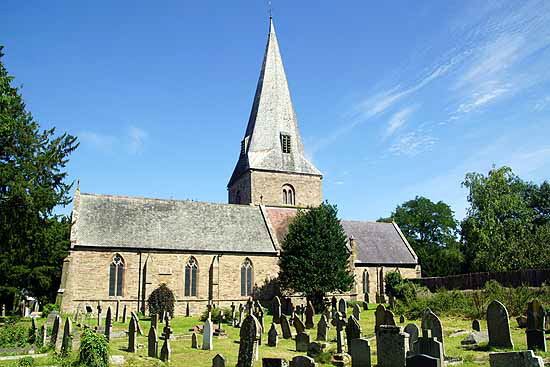 |
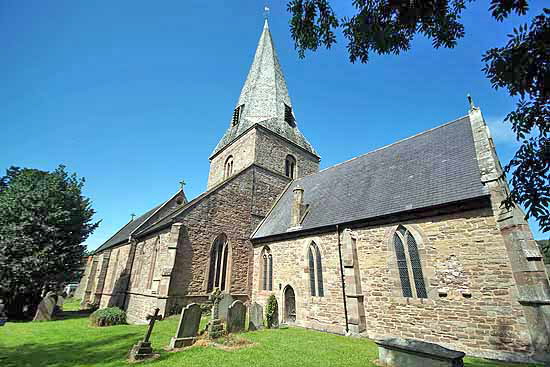 |
|||||||||||||||||||||||||
|
Left and Right: The church from the south and the south east. The tower is Norman. Note the double bell openings. The spire is fourteenth century. |
||||||||||||||||||||||||||
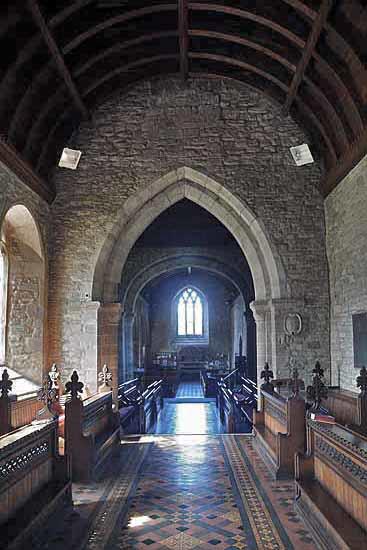 |
||||||||||||||||||||||||||
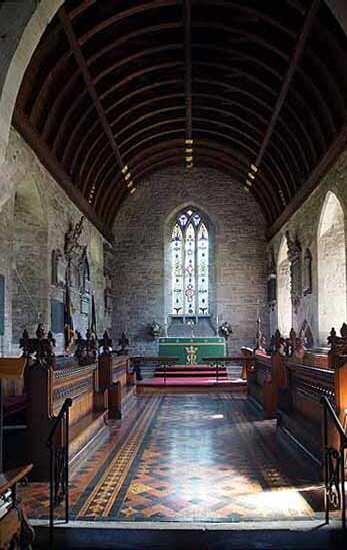 |
||||||||||||||||||||||||||
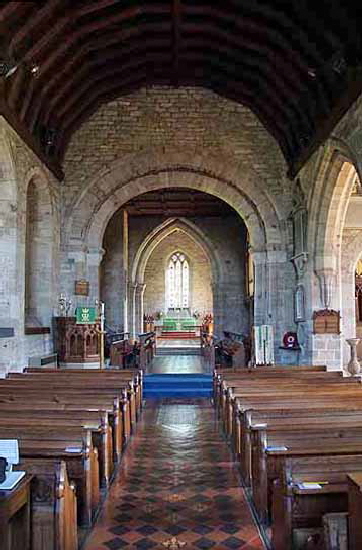 |
||||||||||||||||||||||||||
|
Left: Looking up the length of the church towards the east, its Norman provenance is immediately obvious with the rather plain archway to the choir below the tower. Beyond that is the pointed chancel arch itself which is Early English and contemporary with alterations to the chancel. Centre: The chancel is a long one, in keeping with what is overall a very long church. Prior to the extension of the nave towards the west the chancel must have been a big proportion of the church. The east window is in an early Decorated style. Right: Looking from the arch down the length of the church to the west. |
||||||||||||||||||||||||||
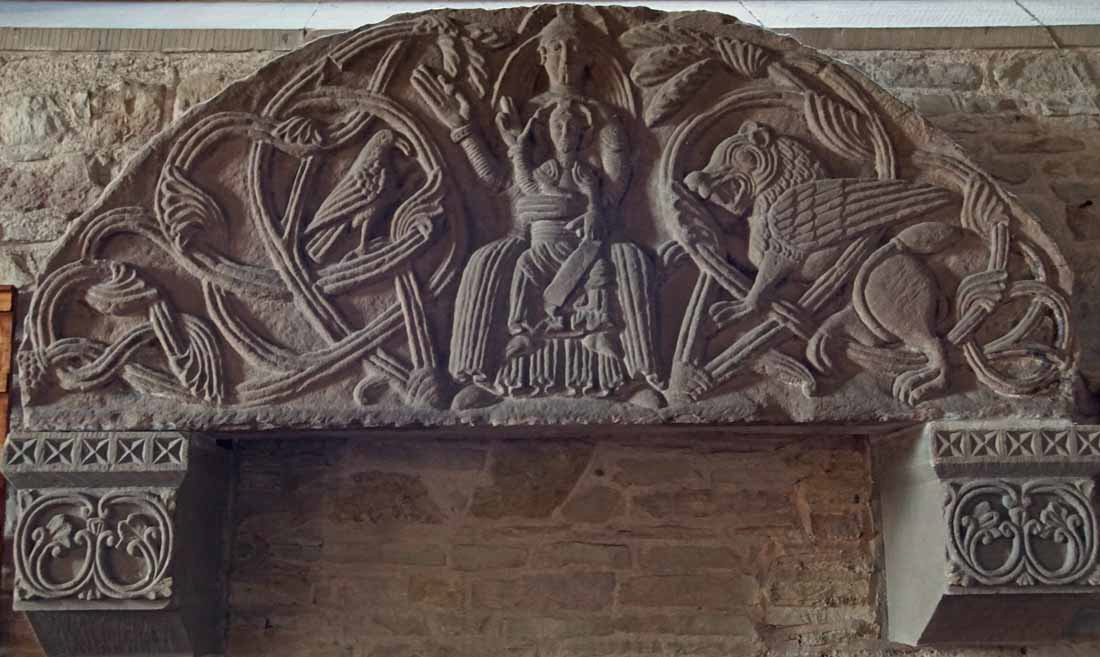 |
||||||||||||||||||||||||||
|
The tympanum which is mounted on the north west wall. The “capitals” are tasteful modern supports for the tympanum. The central figures are, in he view of Malcolm Thurlby, “problematic” and he writes extensively on the topic. Let’s begin by saying that it doesn’t take Malcolm to point out the rather peculiar facial features of the two figures. If, as has been commonly supposed, the larger figure is Mary then her features are remarkably unfeminine- note, for example, the heavily cleft chin. The overall effect is more Byzantine than Northern European. The heavy pleated costume - a feature of the Herefordshire School - also has a Byzantine appearance. You can see some interesting parallels in the Anglo-Saxon carvings at Breedon-on-the-Hill in Leicestershire. Very problematic indeed is the appearance of a cruciform halo - a symbol of Christ or God - behind “Mary’s” head. Thurlby says that some commentators have suggested an error on the part of the Fownhope sculptor. Well ok, but it seems remarkably conceited to claim an error by a mason eight hundred years ago to support a modern assumption as to what the sculpture was intended to represent! A little humility would not go amiss, methinks. I prefer Thurlby’s notion that the bird to the left of the sculpture is meant to represent the Holy Ghost, completing a Trinity with God the father with Christ on his lap. Even this creates problems, however, because Mary Webb’s “Ideas and Images in Twelfth Century Sculpture” discusses many Trinity allegories associated with birds. Moreover, Thurlby draws attention to what is assumed to be a piece of fruit in the outstretched hand on the seated figure which has parallels in some French representations of Virgin and Child and supposed to symbolise Christ as the fruit of Mary’s womb. If this was the hand of God the Father wouldn’t his fingers also be arranged in an attitude of benediction as are those of the Christ child? Are you confused? If not you should be! We must all make of it what we will! There is much more to be read on the subject in Malcolm Thurlby’s book where he speculates, amongst other things, about a fusion of the imagery of the Ascension and of Christ in Majesty. Yes, my eyes are glazed over too but you have to admire the scholarliness of all this. I haven’t even mentioned the winged lion. The lion is an exceptionally common motif in Norman sculpture but this elaborate design is very characteristic of the Herefordshire School with large eyes and feathery mane. This lion, however is winged so it is reasonable to assume that it is intended to portray St John. |
||||||||||||||||||||||||||
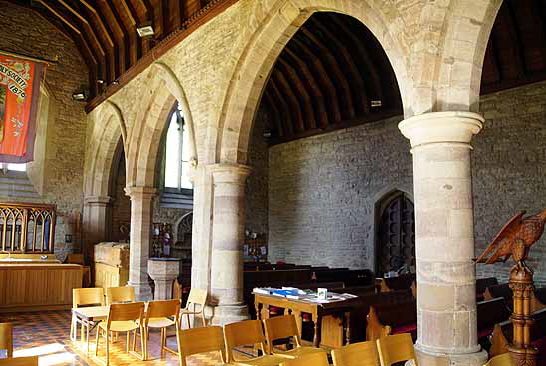 |
 |
|||||||||||||||||||||||||
|
Left: The north aisle dates from the thirteenth century. You can see quite clearly here that the nave was extended west by two much narrower bays of about 1300, by which time the fashion is for octagonal piers, not round ones. Right: The old banner of the Fownhope Heart of Oak Friendly Society. Remarkably, the organisation still exists. I quote from its own website: “Fownhope Heart of Oak Society can trace its roots back to the early 1800s. At that time, there were many Heart of Oak Societies in Britain based predominantly in the rural areas with agricultural workers forming the majority of the membership. |
||||||||||||||||||||||||||
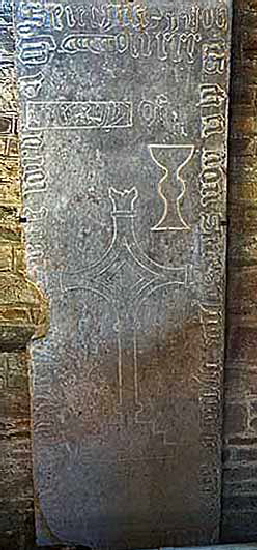 |
||||||||||||||||||||||||||
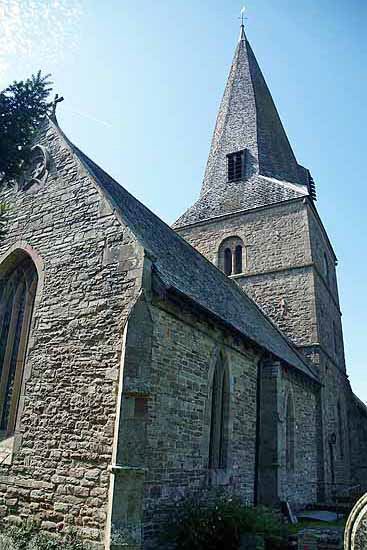 |
||||||||||||||||||||||||||
 |
||||||||||||||||||||||||||
|
Left: The early English south door that would have led to the displacement of the tympanum. Centre: The north side. Right: The grave slab of John Sherman dated 1490. |
||||||||||||||||||||||||||
|
Click Here to Return to “The World’s Greatest Church Trail II” |
||||||||||||||||||||||||||
|
|
||||||||||||||||||||||||||